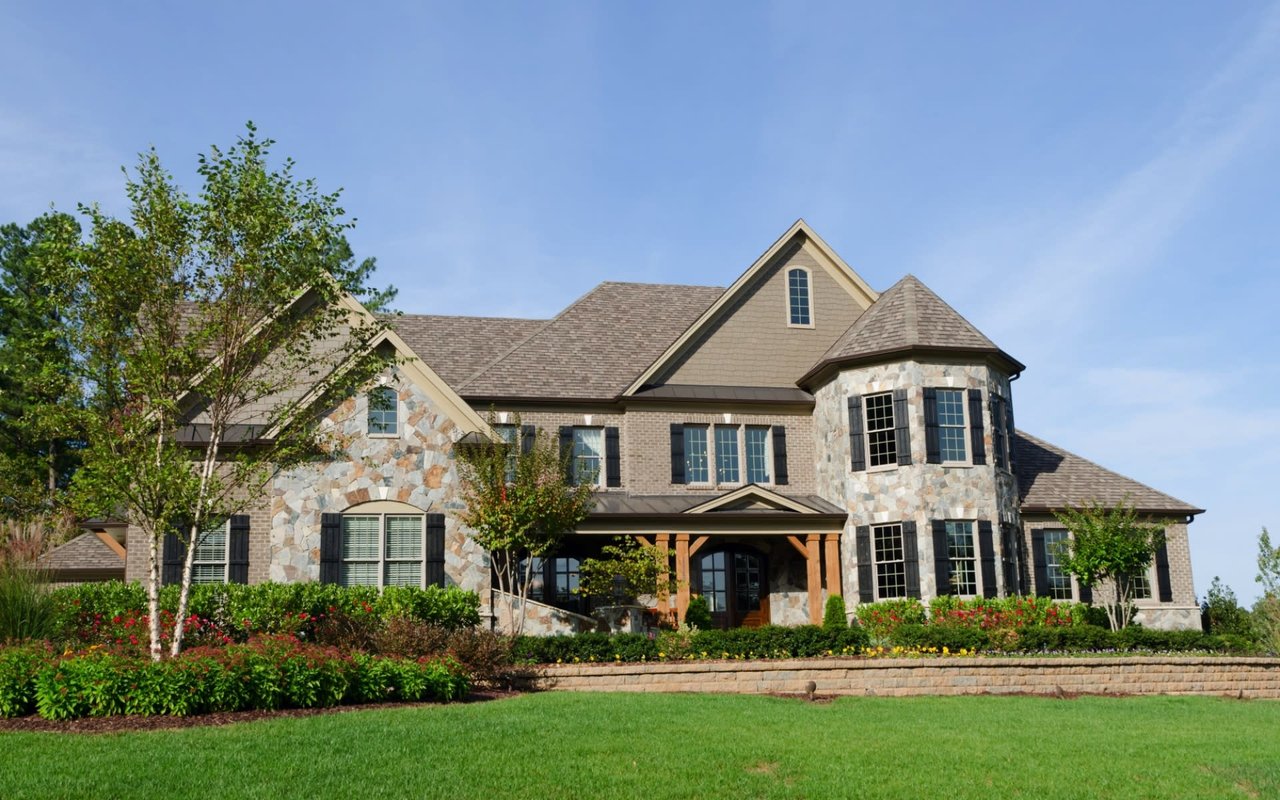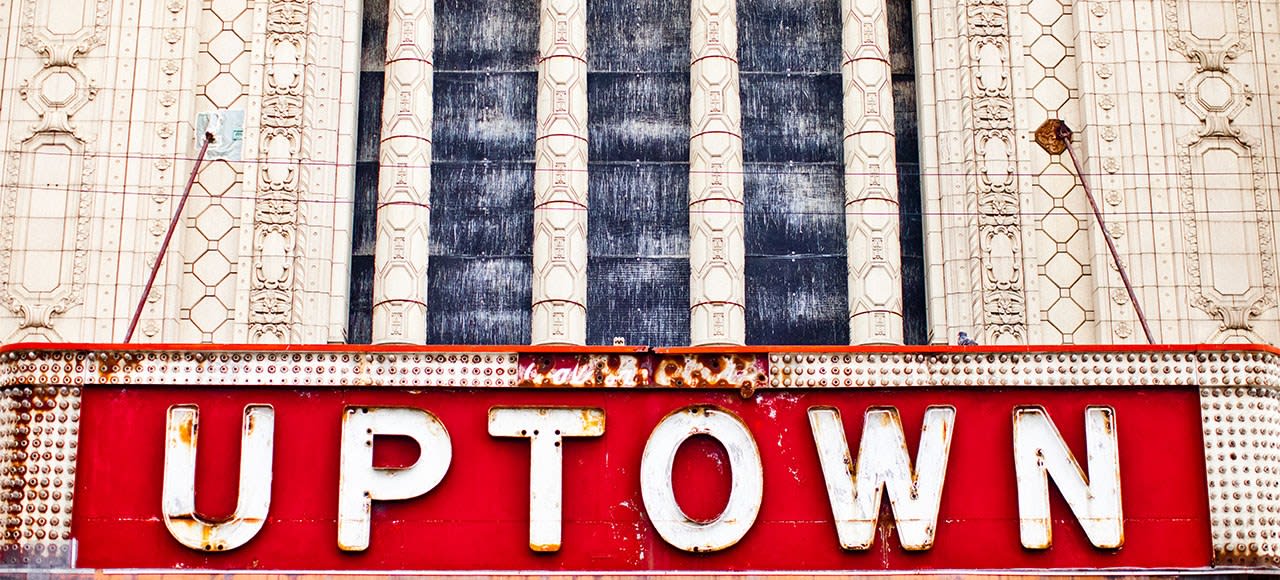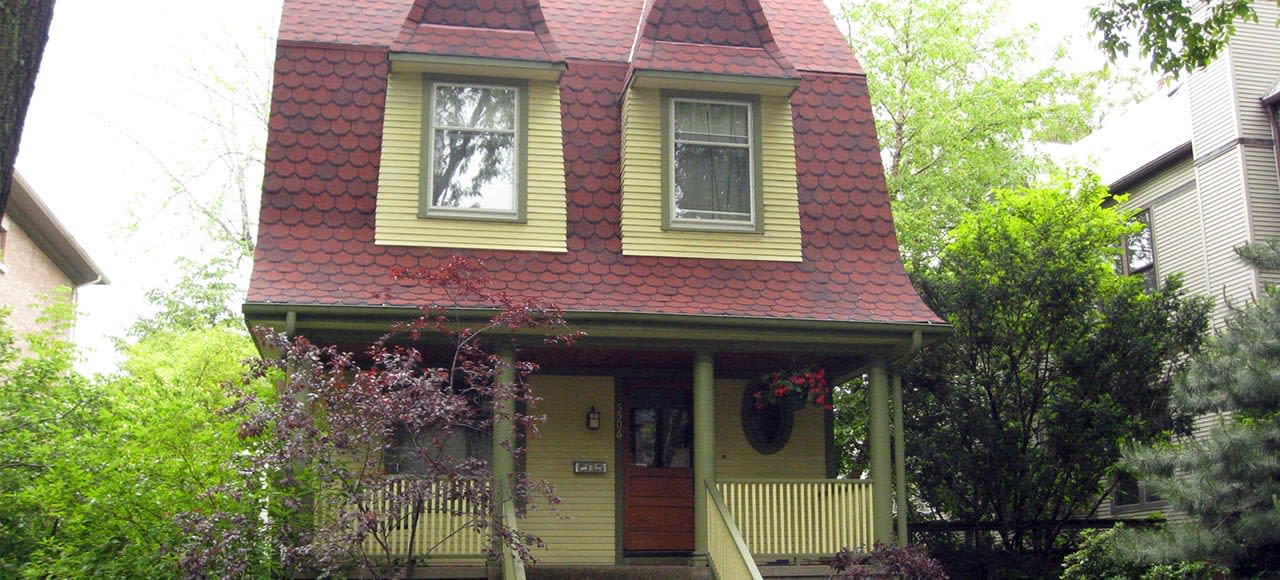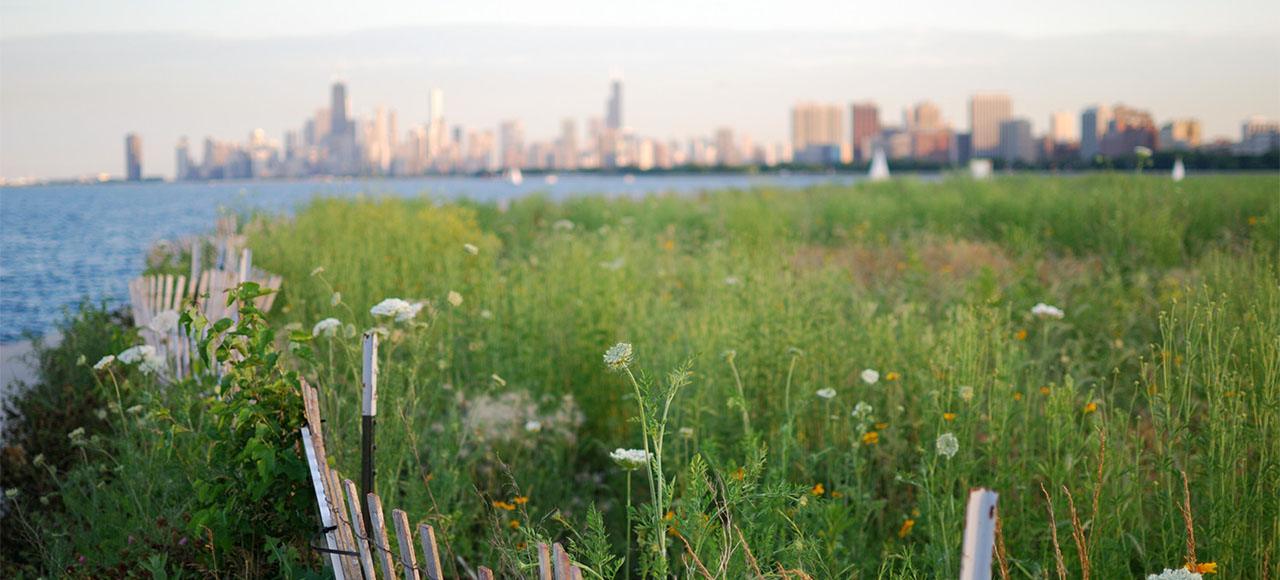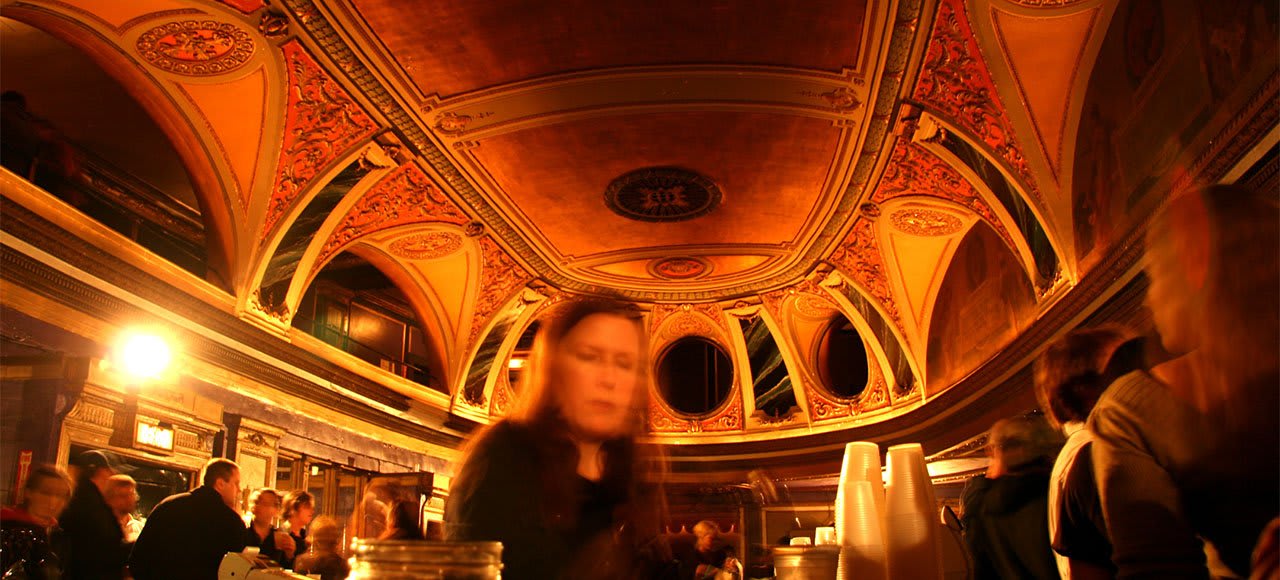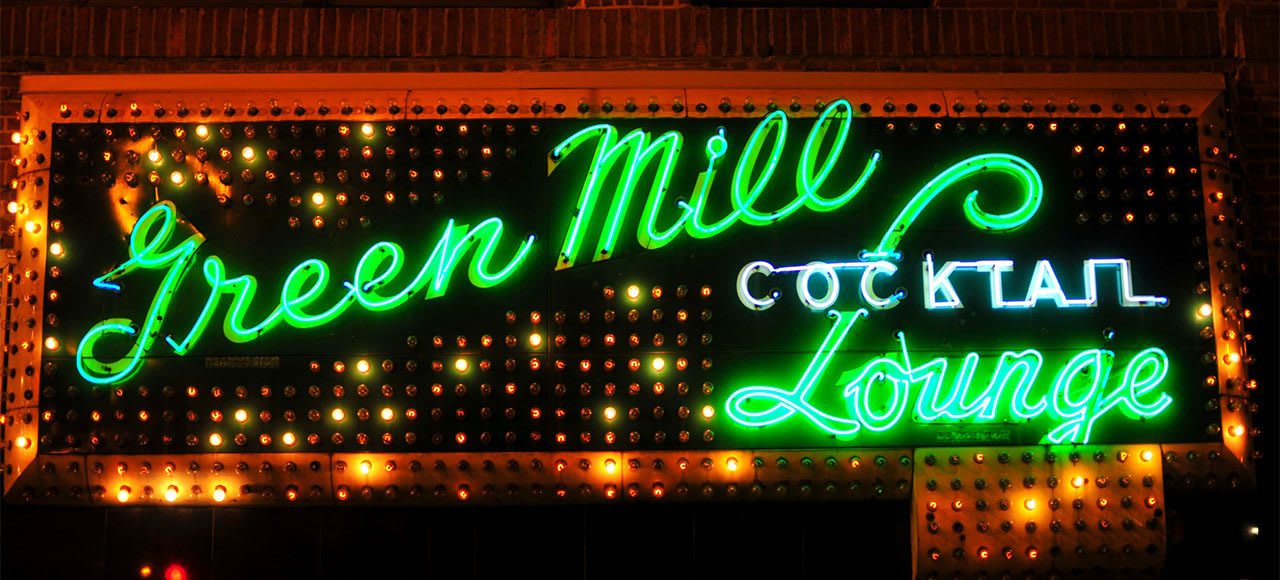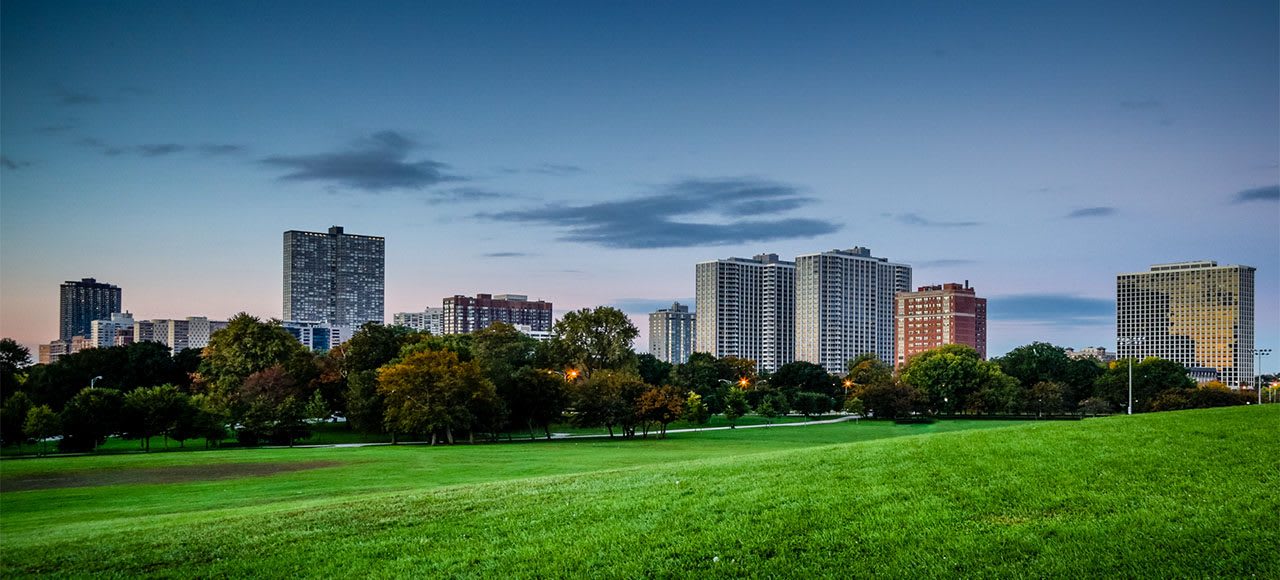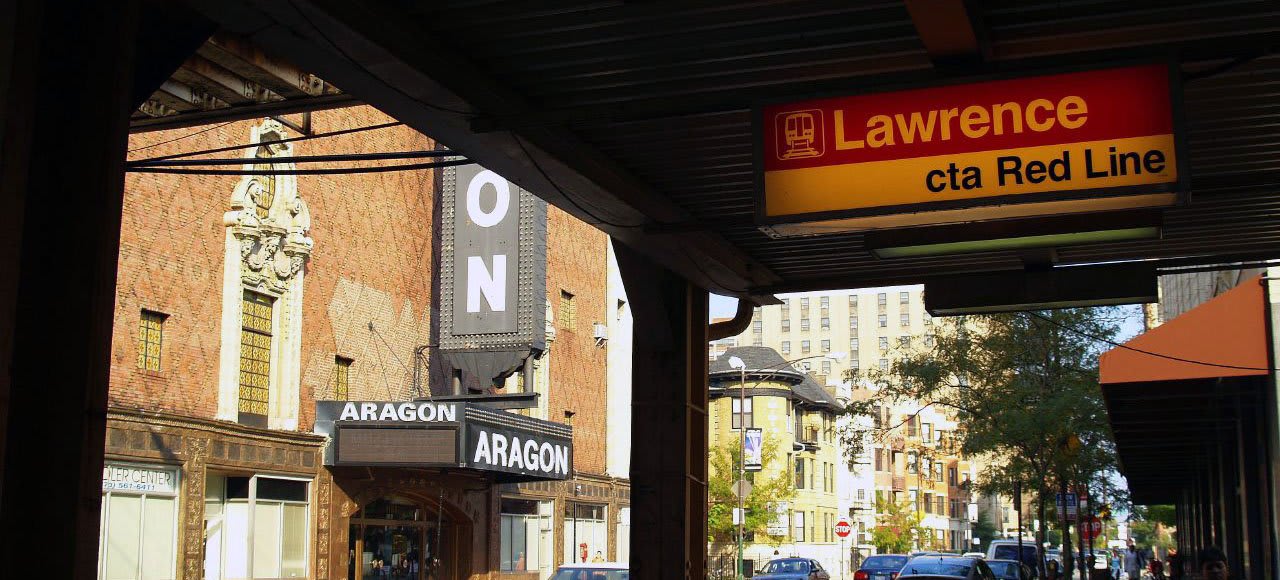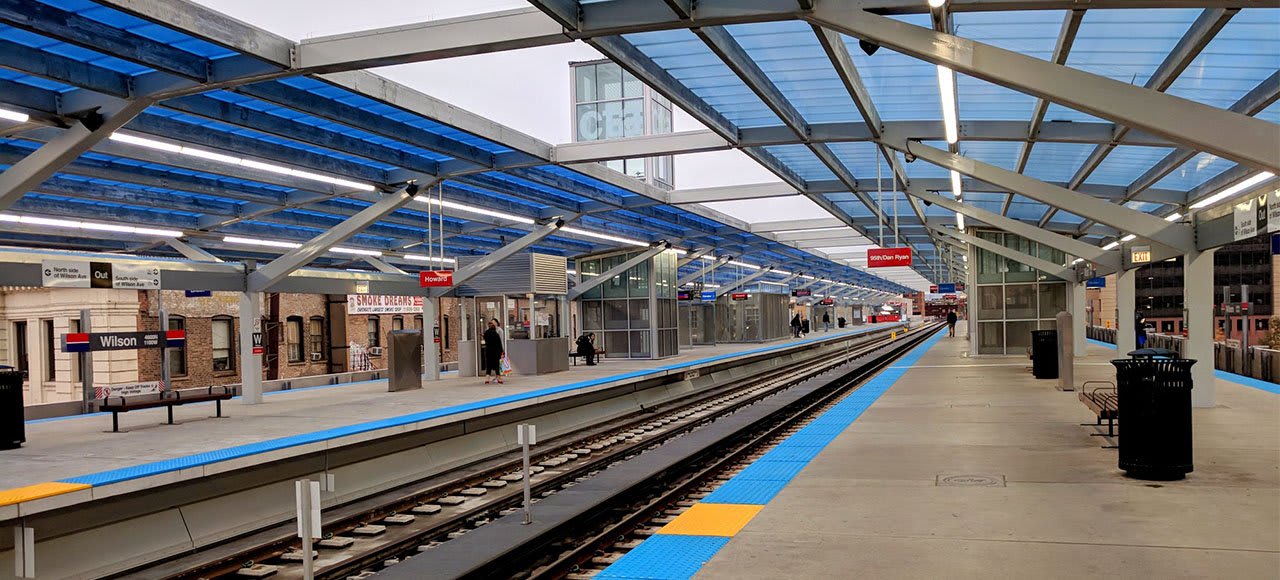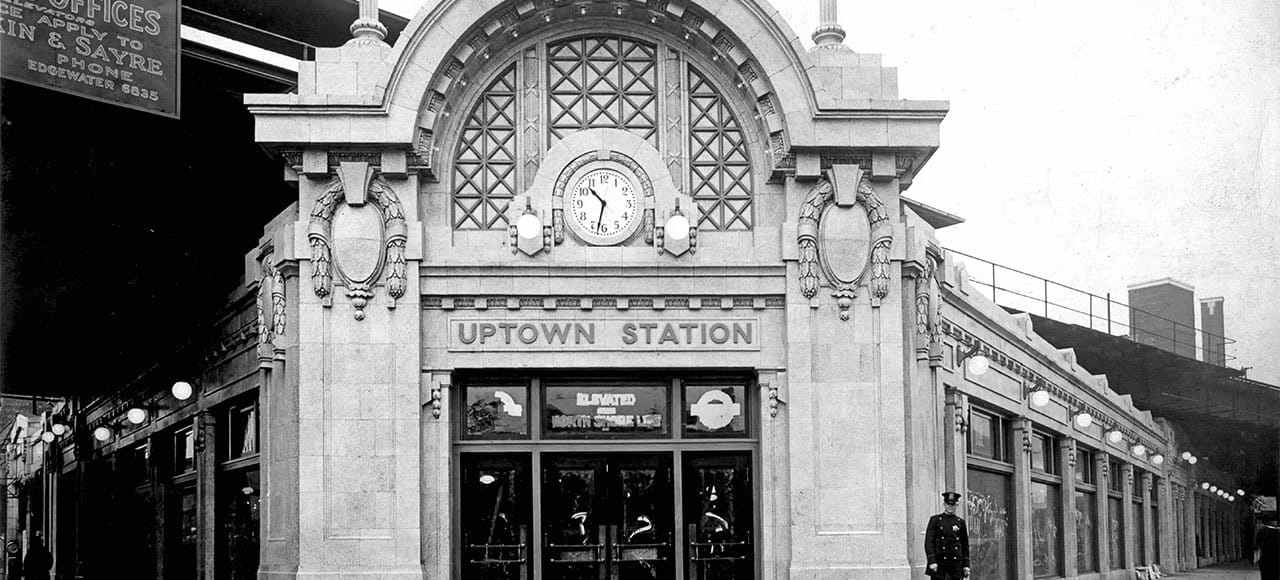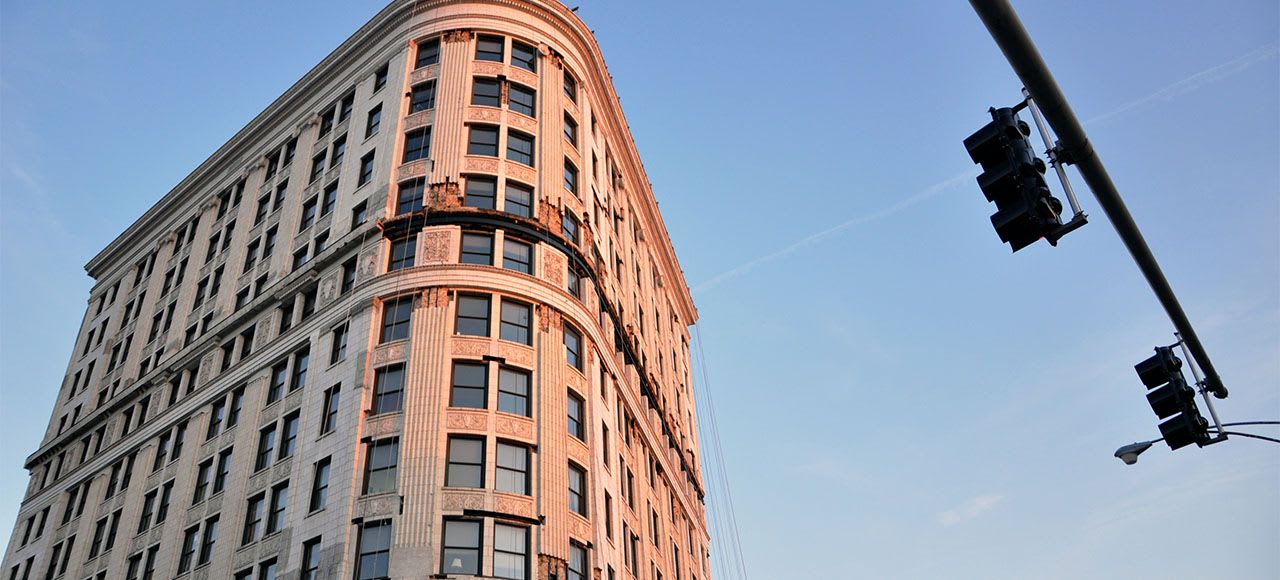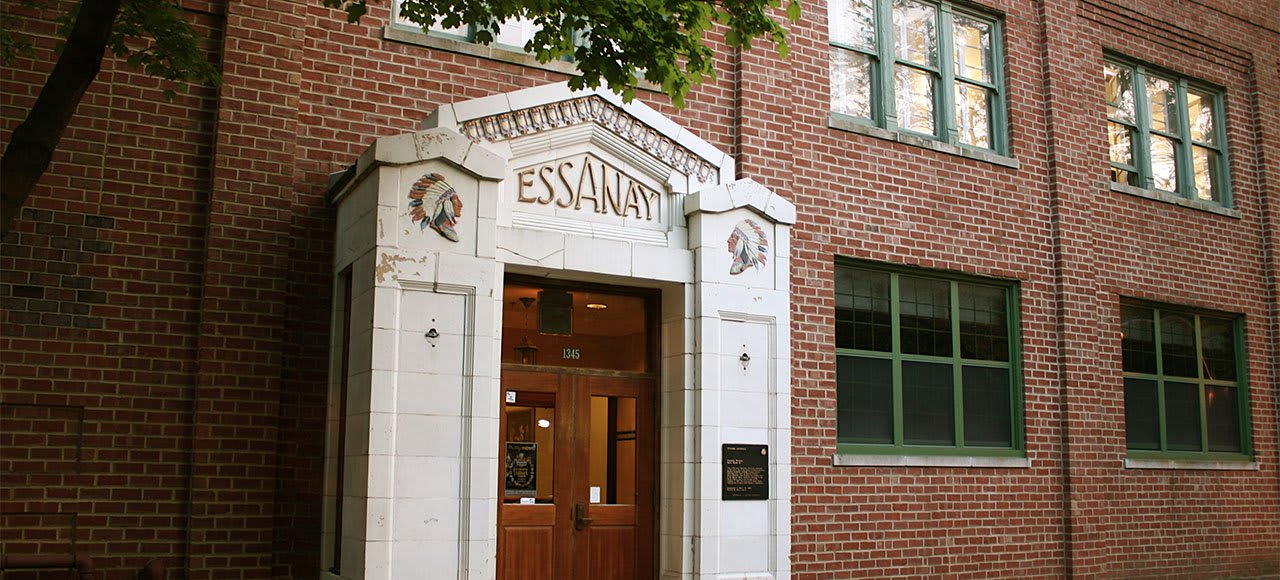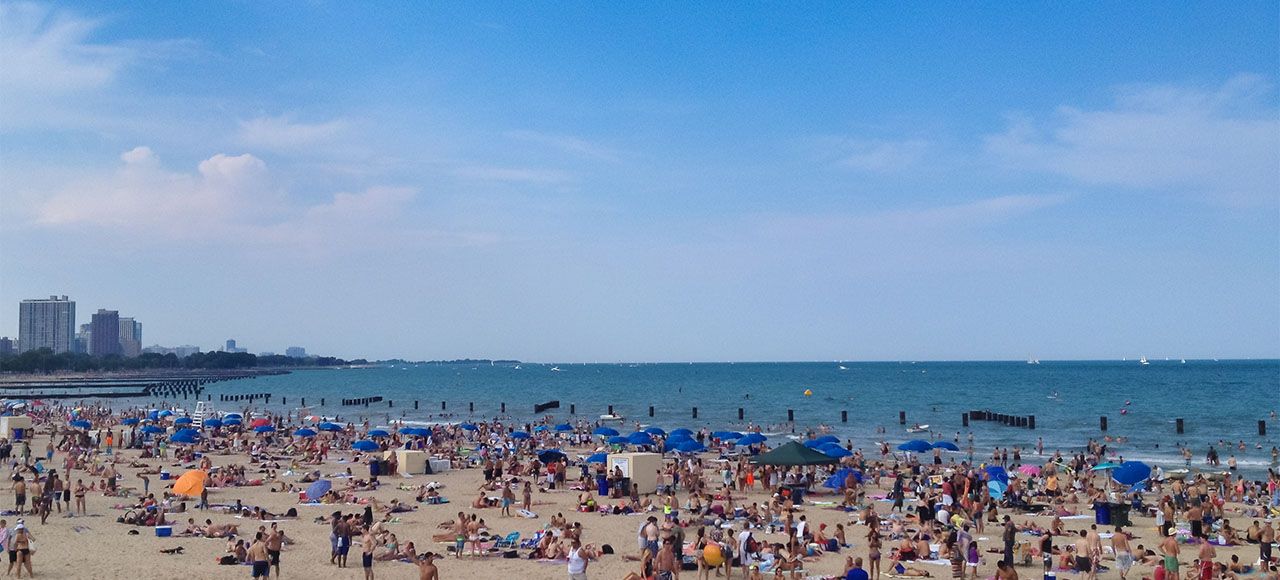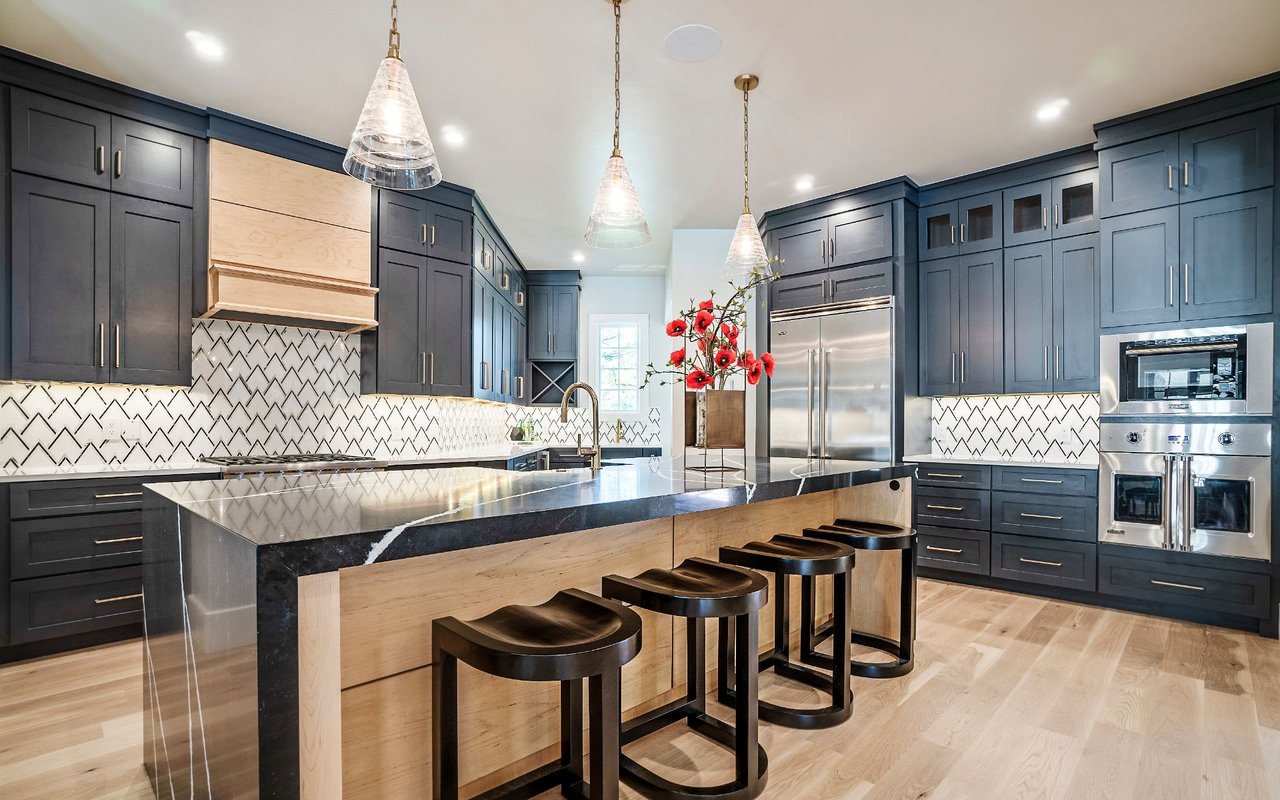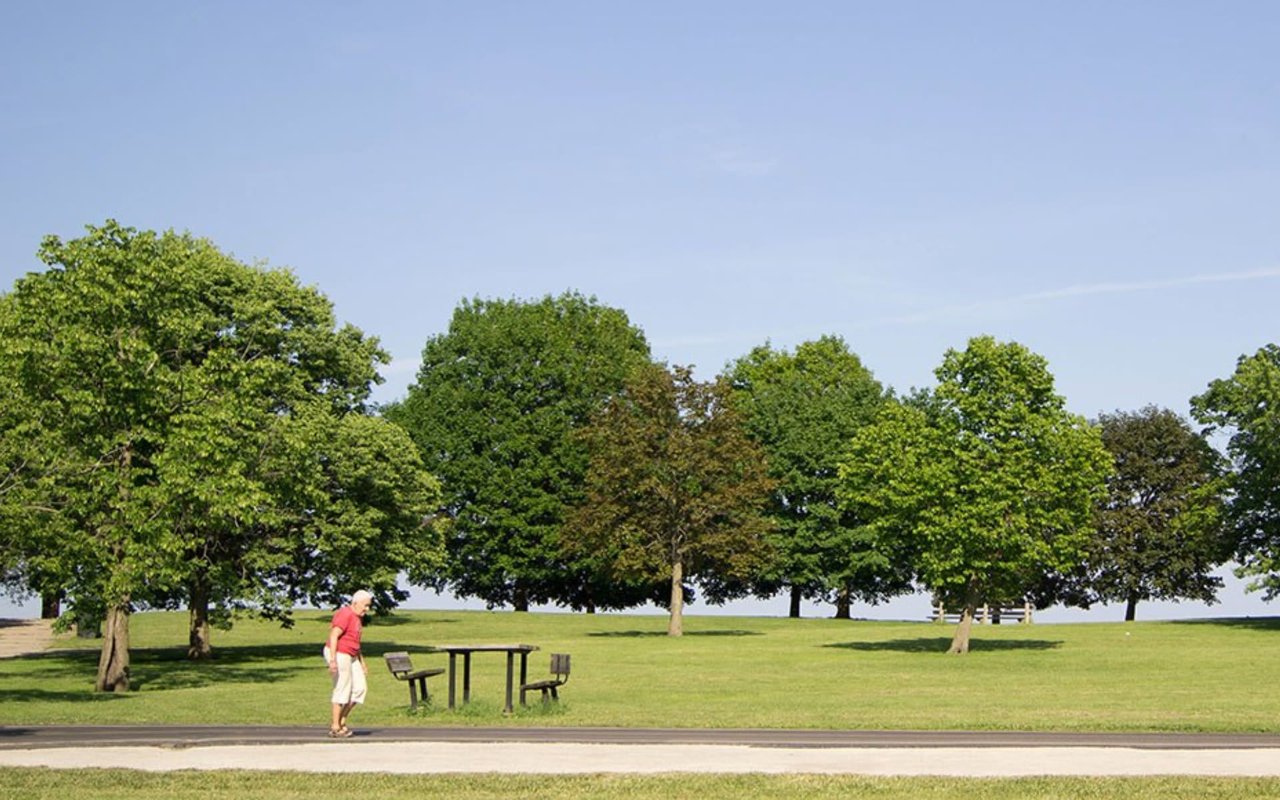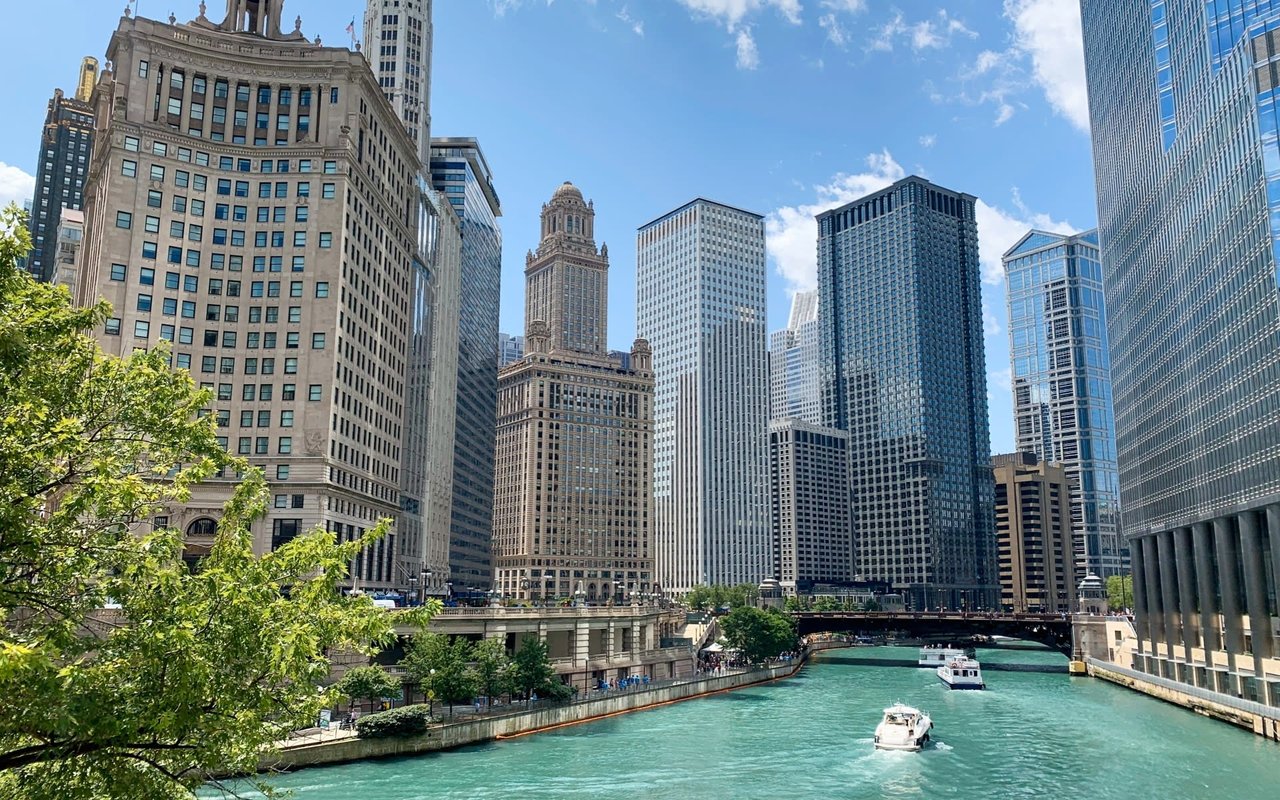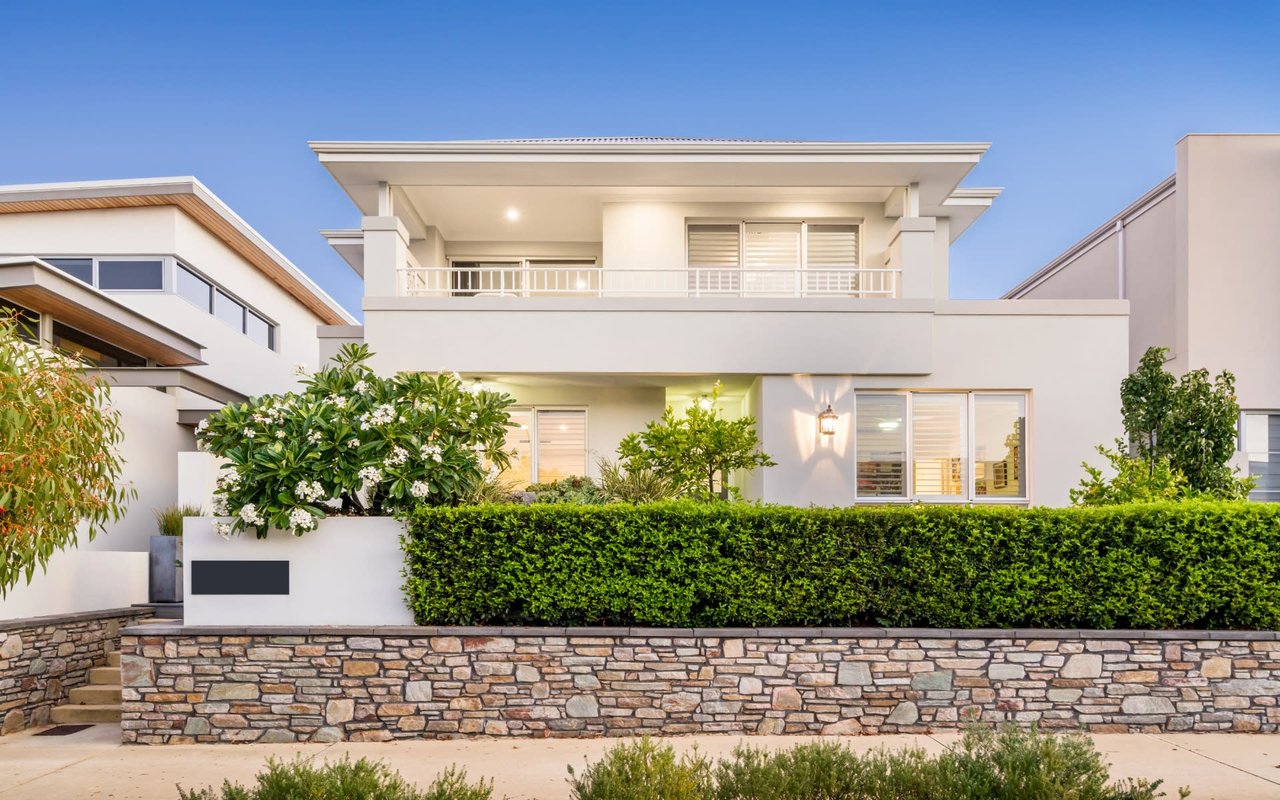The Uptown Theater sign. Photo cropped from the original, taken in 2009 by Thomas Hawk [CC BY-NC 2.0], via Flickr.
In this series of blog posts, we provide a summary of the neighborhoods where we’re currently listing and developing homes. In this post, I’ll be focusing on living in Uptown Chicago.
Located about 6 miles north of the Loop, Uptown’s neighborhood boundaries are Irving Park Rd to the south; the western edge of Graceland Cemetery, west along Montrose at the cemetery’s north end, and Clark Street to the west; Foster Ave to the north; and the lakeshore to the east. It includes the smaller neighborhoods of Buena Park, Sheridan Park, and Winnemac.
Uptown’s heart and early claim to fame was its focus on entertainment, with movie studios, grand venues, and small jazz bars being developed in the early 1900s. A neighborhood downturn in the middle of the 20th century led to struggles — including a contributing factor in Edgewater identifying as a separate neighborhood — and a grit that’s still apparent today. However, this history takes its place alongside the opulent grandeur of Art Deco architecture to form a distinctively Chicago experience.
An adorable single family home in Uptown. Photo cropped from the original, taken in 2008 by supafly [CC BY-NC-ND 2.0], via Flickr.
Uptown is a surprisingly affordable north side lakeshore community, with great beaches and parks, fantastic transit (that has recently been revamped) and walkability, celebrated diversity, authentic international eateries, steady world-class entertainment, and hope for a revitalization of the some of the stunning icons of its past.
The Montrose Point Bird Sanctuary overlooking Lake Michigan and the city skyline. Photo cropped from the original, taken in 2009 by uptowner [CC BY 2.0], via Flickr.
Read on to see why it’s always a beautiful day to be living in Uptown Chicago.
Entertainment and Eating
The interior of historic Riviera Theater. Photo cropped from the original, taken in 2006 by Señor Codo [CC BY-SA 2.0], via Flickr.
While many residents are hoping that landmarks like the Uptown Theater will be restored to their former glory, many of the neighborhood’s icons have weathered the ups and downs for decades. One such locale is the Green Mill, a famous jazz bar that has seen countless storied performers grace its stage — and guests seated at its booths (or, as legend has it, scuffling through its underbelly). Next, the Riviera Theater (pictured above) was built in 1917 and is in use as a concert hall today. Finally, the Aragon Ballroom was built as a dance hall in 1926 and is also a live music venue today.
Smaller indie theaters are interspersed throughout Uptown. Noteworthy outfits include the Black Ensemble Theater and the Chicago Magic Lounge.
Uptown’s famous Green Mill Cocktail Lounge. Photo cropped from the original, taken in 2011 by Viewminder [CC BY-NC-ND 2.0], via Flickr.
It’s not all jazz, cocktails, and cabaret in Uptown. There’s plenty to do under a blue sky, too. The neighborhood has an enviable stretch of coastline, with a beautiful beach (including a dog-friendly area), sports fields, and a bird sanctuary. A somewhat less obvious, but perhaps equally enjoyable, way to spend a summer afternoon is at the historic Graceland Cemetery. It was established in 1860 and is a stunningly designed Victorian oasis within the city. Many of Chicago’s most famous residents are laid to rest here, including Jack Johnson, Marshall Field, and Roger Ebert. Plus, the Morton Arboretum has certified the cemetery’s collection of trees. A self-guided tree tour is available.
The view from Cricket Hill in Uptown. Photo cropped from the original, taken in 2015 by Randall McDonnell [CC BY-NC 2.0], via Flickr.
Foodies and those interested in Asian and Asian American cultures will find joy in the local businesses of West Argyle Street. It’s been nicknamed New Chinatown, Little Saigon, Little Cambodia, Vietnamese Town, and Little Vietnam. Whatever you call it, it’s a fantastic place to spend an afternoon or evening. Shops, bakeries, and Vietnamese eateries abound on this pedestrian- and bike-friendly stretch. It also hosts special events throughout the year, including a weekly Argyle Night Market in the summer and an annual Lunar New Year celebration.
The Numbers
The Lawrence CTA Red Line stop in Uptown Chicago, across from the Aragon ballroom. Photo cropped from the original, taken in 2007 by Michael Lehet [CC BY-ND 2.0], via Flickr.
A typical commute to the Loop from Uptown using public transportation takes about 35 to 40 minutes, door to door, depending on when you get out the door. To get to O’Hare Airport via public transportation takes around an hour. By car, a typical drive to the Loop without traffic takes about 12 to 20 minutes, and a trip to O’Hare takes about 20 to 35 minutes, again without traffic.
Walkscore.com considers Uptown a walker’s paradise, meaning daily errands do not require a car. The neighborhood has excellent transit and is considered a biker’s paradise, too.
According to Zillow, home values in Uptown have been quite stable over the past year and are anticipated to remain so for the coming year. The median home value is far more affordable than nearby neighborhoods like Wrigleyville and Edgewater Glen.
The updated Wilson East Platform & Main Stationhouse in Uptown. The CTA unveiled this new platform in fall 2017. Photo cropped from the original, posted by the Chicago Transit Authority to Flickr the day after the unveiling [CC BY-NC-ND 2.0].
A Bit of History
The Wilson Station in Uptown in 1923. Photo cropped from the original, posted to Flickr by the Chicago Transit Authority [CC BY-NC-ND 2.0].
Uptown’s history may be best summed up by some of the nicknames it has carried throughout the years: Bright Light District, Chicago’s Ellis Island, and the Loop’s little brother.
Uptown was known as a glitzy entertainment district in the 1920s and 30s and a notorious place to watch live jazz in dark lounges during Prohibition, among the likes of Al Capone and his henchmen. The neighborhood’s amenities led to an increase in housing development. This, coupled with its easy access to the Loop via public transit, led to a population boom.
The Uptown Bridgeview Bank at the corner of Lawrence and Broadway. Photo cropped from the original, taken in 2011 by Chris Bentley [CC BY-NC-ND 2.0], via Flickr.
Unfortunately, Uptown was hit hard by the Great Depression. Buildings that had been developed as luxury housing and opulent hotels were converted into rooming houses.
Immigrants and migrants from other parts of the country, mostly minorities, settled in Uptown in the 1940s and 50s. Then, job scarcity and substandard housing led to increased crime rates and buildings falling into disrepair in the 1960s and 70s. Controversial urban renewal began in the late 1960s.
Over the past handful of years, Uptown has been undergoing a burgeoning renaissance.
The historic Essanay Studios. Photo cropped from the original, taken in 2009 by Laurie Chipps [CC BY-ND 2.0], via Flickr.
One special site unique to Uptown is Essanay Studios (pictured above), where hundreds of early motion pictures were produced, starring the likes of Charlie Chaplin and Gloria Swanson. The famous film The Tramp was filmed here. Chicago Magazine has a great article on the studios’ history. The building is now home to St. Augustine College and has been named a Chicago landmark.
Montrose Beach. Photo cropped from the original, taken in 2013 by dronepicr [CC BY 2.0], via Flickr.
If you’d like to learn more about living in Uptown Chicago, I recommend exploring the following resources:
- Chicago Magazine’s Field Guide to Uptown (published in April 2017)
- ‘The Top 8 Things To Do And See In Uptown Chicago, IL’ from the Culture Trip
- ‘Taking a Look at Uptown 40 Years Ago’ from WTTW
- Chicago Sun-Times’ Uptown neighborhood guide (paywall)
- Encyclopedia of Chicago’s Uptown entry
- Uptown United and Business Partners, The Chamber for Uptown (note their list of block clubs and neighborhood associations)
Interested in living in Uptown Chicago? I don’t have any active listings in the neighborhood as of this writing, but I’ve worked in the area in the past. Please feel free to contact me for more information on buying — or selling — a home in Uptown.
